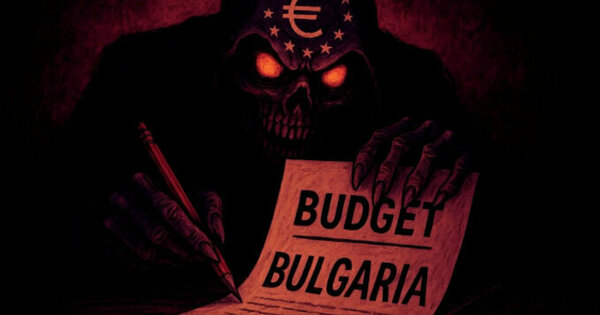What India Inc's ECB surge tells us - Opinion News | The Financial Express
The latest data from the Reserve Bank of India (RBI) shows that external commercial borrowings (ECBs) by Indian corporations reached $11.04 billion in March, a six-year high. For FY25, total ECB filings reached a record $61.18 billion, marking a 26% year-on-year growth. Notably, non-banking financial companies (NBFCs) accounted for 43% of these inflows, significantly higher than their historical share of 20-37% over the previous five years. Is this surge a reflection of growing corporate ambition and global integration? Or does it signal persistent weakness in our domestic credit architecture?
First, the persistent interest rate differential between domestic and international markets has created a textbook case of arbitrage and rational corporate behaviour. JSW Steel, for example, raised $900 million at just 180 basis points (bps) above secured overnight financing rate (around 4.4% currently). That is significantly cheaper than domestic marginal cost of funds-based lending rate (MCLR)-linked loans at nearly 9%. The advantage persists even after accounting for hedging costs. Industry data indicates that fully hedged ECBs still offer a 20-30 bp cost advantage over domestic borrowing options. Second, the RBI’s liberalised ECB framework, which permits a firm to raise $750 million annually under the automatic route, has made things easier. In March alone, $8.34 billion was raised through this route.
Closer scrutiny, however, reveals that much of the recent ECB activity has been directed towards refinance rather than new investment. According to the RBI’s State of the Economy April bulletin, Indian companies faced $25.8 billion in ECB principal repayments between April 2024 and February. Firms like Mangalore Refinery and JSW Steel have used new offshore borrowings to refinance existing obligations, extend maturities, and manage rollover risk. Though financially prudent, refinancing reflects a balance sheet strategy, not a growth impulse. Thus, the current ECB surge is surely easing debt pressures for firms but is doing little to catalyse fresh investments in the economy.
The growing reliance on ECBs, including for refinancing purposes, highlights persistent challenges in India’s credit intermediation. The domestic credit market has seen significant tightening over the past year. Bank credit growth slowed from 20.2% in FY24 to 11% in FY25—a deceleration driven not just by the high base effect but also by regulatory actions. The RBI’s tightening of prudential norms for unsecured retail credit and NBFC lending has led banks to adopt a more cautious stance. Also, persistent challenges in deposit mobilisation have constrained banks’ lending capacities, compounding the strain on capital access for many firms.
Even the RBI’s repo rate cut to 6.0% in April has not meaningfully improved credit conditions, particularly for firms outside the highest rating categories. Most banks have only marginally reduced their MCLR by 5-10 bps, far short of the central bank’s 50-bp cut. Such sluggish monetary transmission has only heightened the attractiveness of overseas borrowing.
The distortions in the financial intermediation process are evident when even large, creditworthy Indian corporations find it more rational to assume currency risk than to access domestic capital. From a macroeconomic point of view, this is where the risks loom large. While the rupee has been stable of late, backed by the RBI’s robust foreign exchange reserves ($685.7 billion as of May 16) and around 880 tonnes of gold holdings, this calm is not guaranteed. India’s geopolitical neighbourhood remains volatile, as does global risk sentiment. A sudden Fed pivot, a commodity shock, or a trade conflict could easily pressure the rupee. And when it does, firms with unhedged or poorly matched external liabilities could face severe stress.
It is not merely a theoretical concern. Indian corporates have a mixed record on hedging. Around 45% of ECB exposures have remained unhedged in some years, particularly among infrastructure and services firms that claim natural hedges through dollar revenues. But in volatile markets, even those hedges often prove illusory. The 1997 Asian financial crisis and the 2013 taper tantrum teach us how rapidly currency market equilibria can shift.
There are systemic implications, too. The concentration of ECB activity in sectors with cyclical revenue patterns (steel, energy) and entities with potential asset-liability mismatches (NBFCs) creates correlation risk that could amplify financial system stress during an economic downturn.
More worryingly, preference for offshore borrowing could slowly erode the depth of domestic capital markets. If large, creditworthy corporates increasingly bypass Indian banks and bond markets in favour of foreign capital, it leaves the domestic system to cater largely to sub-prime borrowers, the government, and small businesses. Such an outcome is hardly a balanced one. It leaves Indian financial intermediaries with less capacity to diversify risk, making the economy more exposed to external shocks.
Policy-wise, the RBI must now tread carefully. Liberalising ECBs was never meant to replace domestic credit development. It was intended to complement it. The time may be right for policy recalibrations, including tighter disclosure norms around ECB end use and hedging disclosure norms, more rigorous monitoring of sectoral exposures, and, above all, a determined push to deepen India’s corporate bond market. Without these, what is individually optimal for firms may collectively undermine the resilience of India’s financial system—a classic fallacy of composition that policymakers would be wise to address before market forces impose their own costly correction.
The authors teach at the Indian Institute of Management Ranchi and Jindal Global Law School, O P Jindal Global University, respectively.
Recommended Articles
Archer back to face India at Lord's as Wood eyes surprise return in time for fifth Test - Yahoo Sports

Jofra Archer will start his first Test match in more than four years after being named as the only change in the England...
Bulgaria to join euro area on 1 January 2026

The European Central Bank (ECB) is the central bank of the European Union countries which have adopted the euro. Our mai...
Patrick Montagner: SREP reform: towards simpler and more effective supervision

European banking supervisors contribute to keeping the banking system safe and sound. European banking supervision compr...
Talks in Sintra Highlight the Central Bank Playbook Has Had a Makeover

The annual ECB Central Banking Forum in Sintra provided plenty of lessons on how central banks across Asia and the West ...
Will the ECB Control Bulgarias Budget After Euro Adoption

A video posted on Facebook by Kostadin Kostadinov, leader of the Revival party, claims that once Bulgaria joins the euro...
You may also like...
Diddy's Legal Troubles & Racketeering Trial

Music mogul Sean 'Diddy' Combs was acquitted of sex trafficking and racketeering charges but convicted on transportation...
Thomas Partey Faces Rape & Sexual Assault Charges

Former Arsenal midfielder Thomas Partey has been formally charged with multiple counts of rape and sexual assault by UK ...
Nigeria Universities Changes Admission Policies

JAMB has clarified its admission policies, rectifying a student's status, reiterating the necessity of its Central Admis...
Ghana's Economic Reforms & Gold Sector Initiatives

Ghana is undertaking a comprehensive economic overhaul with President John Dramani Mahama's 24-Hour Economy and Accelera...
WAFCON 2024 African Women's Football Tournament

The 2024 Women's Africa Cup of Nations opened with thrilling matches, seeing Nigeria's Super Falcons secure a dominant 3...
Emergence & Dynamics of Nigeria's ADC Coalition

A new opposition coalition, led by the African Democratic Congress (ADC), is emerging to challenge President Bola Ahmed ...
Demise of Olubadan of Ibadanland
Oba Owolabi Olakulehin, the 43rd Olubadan of Ibadanland, has died at 90, concluding a life of distinguished service in t...
Death of Nigerian Goalkeeping Legend Peter Rufai

Nigerian football mourns the death of legendary Super Eagles goalkeeper Peter Rufai, who passed away at 61. Known as 'Do...